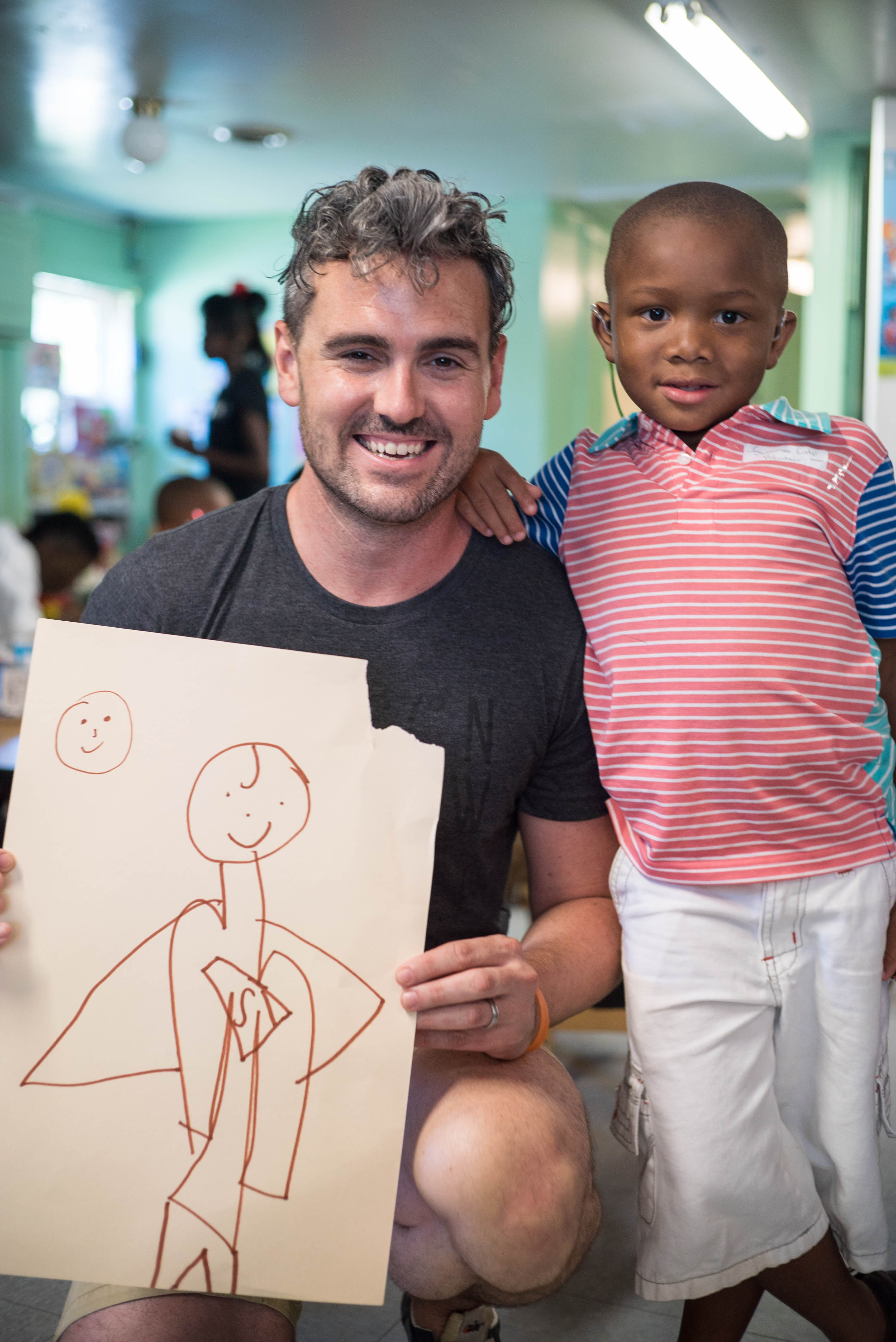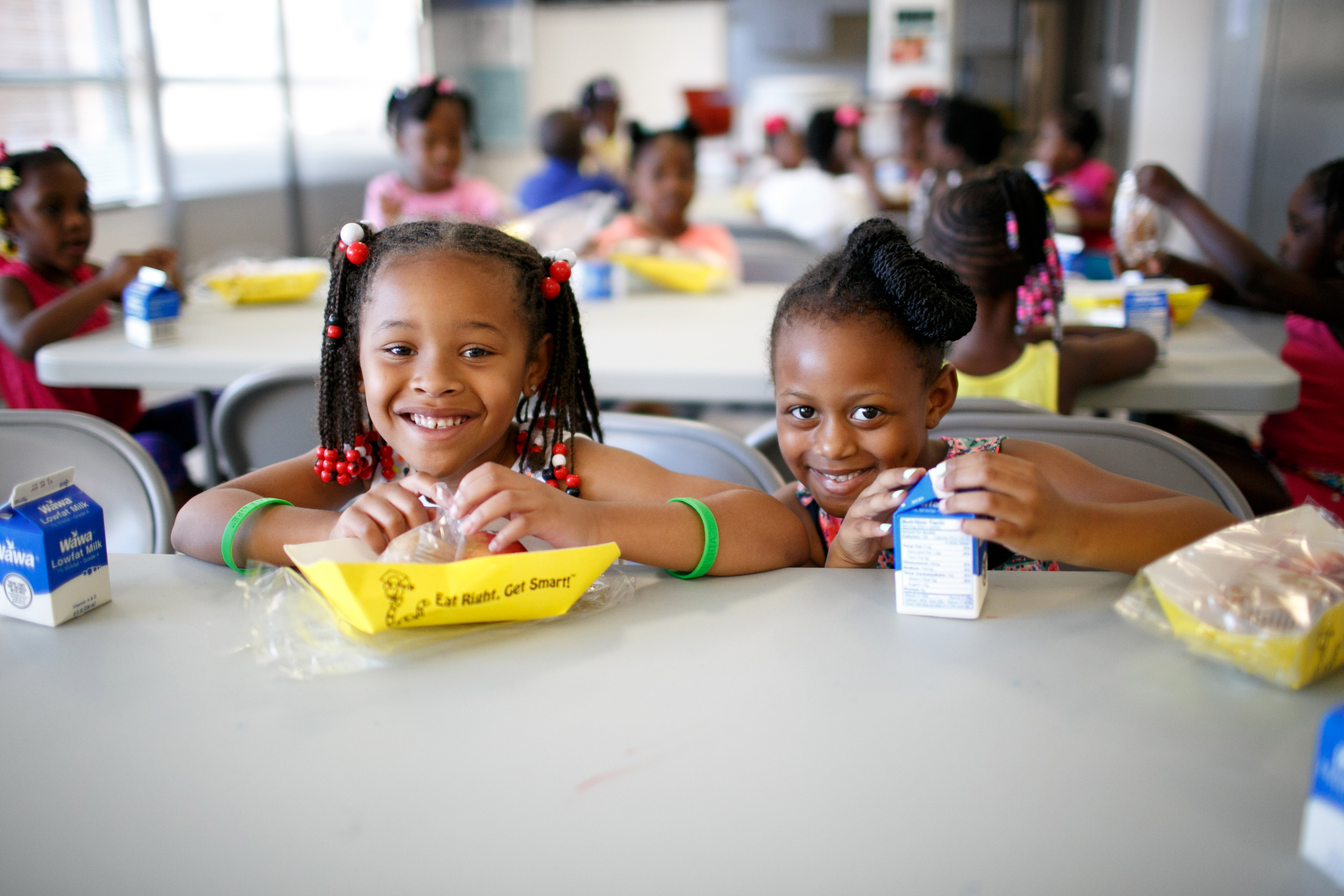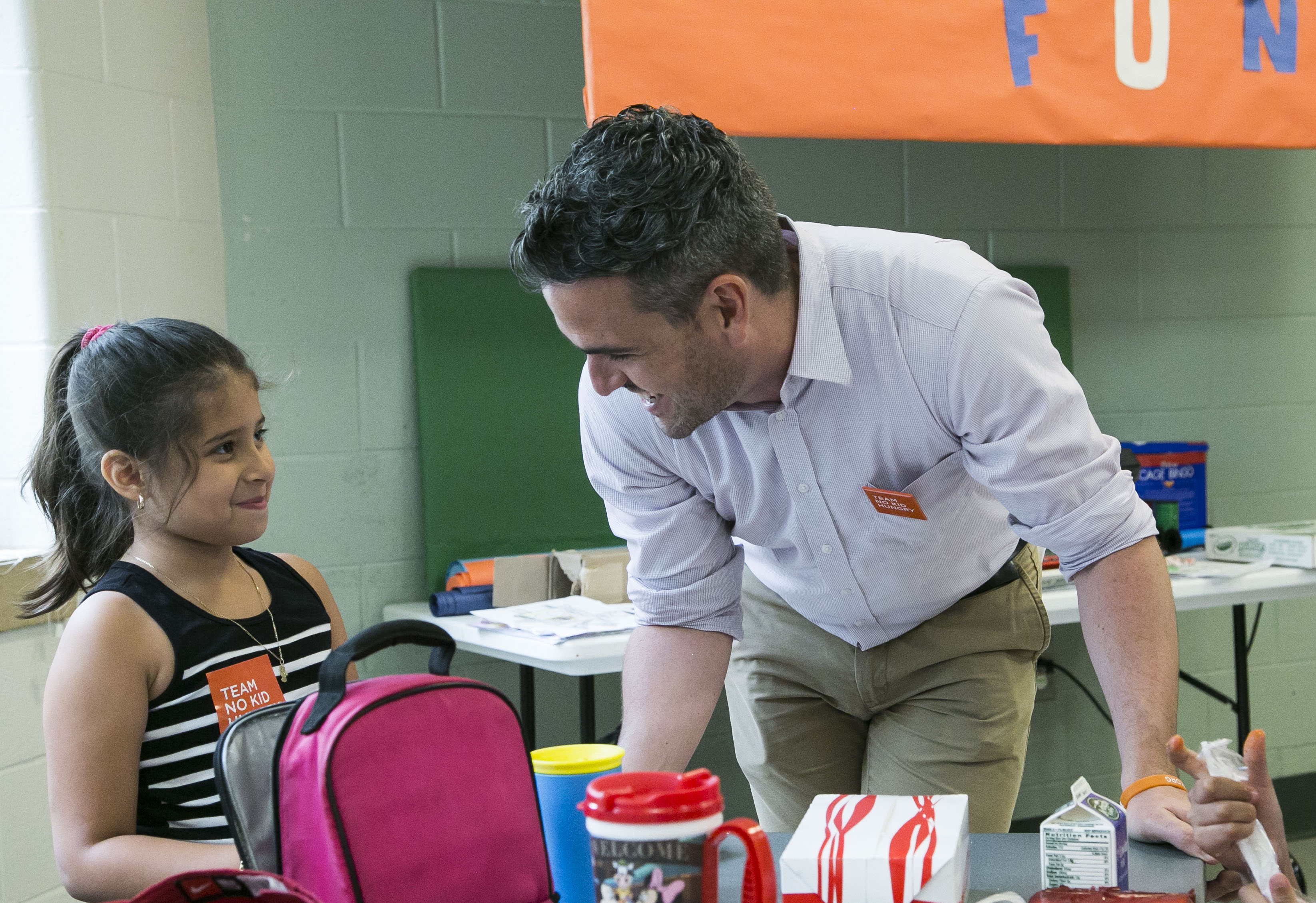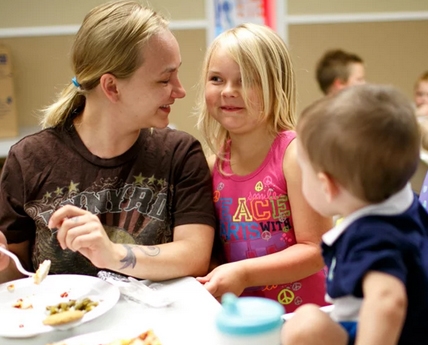
America’s battle with obesity continues unabated, fueled by the consumption of fast food. For children living in the United States, the prevalence of obesity has more than tripled from from 1971 to 2011.
The American Heart Association reports that about one in three American kids and teens is overweight or obese.
On the flip side and largely unpublicized, is the fact that in 2016, poverty and hunger reached a painful milestone, with now over half the public school students in the country coming from low-income families.
Teachers are reporting that kids are regularly going to school hungry.
“Hunger is causing the demise of an entire generation that has so much potential. These children are fighting for their lives daily,” says Wintor McNeel, guidance counselor.
Adds Robbie Butler, an elementary school teacher: “This is America. We have tons of food. It makes no sense for people to go hungry.”
And he’s right.
— Audrey Harris, elementary school teacher says: “The hardest part of being a teacher? Watching my students fail. Knowing that they didn’t have what they needed to succeed.”
While the discussion of kids going to school hungry rarely surfacing in mainstream media, organizations like No Kid Hungry are working tirelessly to end childhood poverty — and making a real difference.
Clay Dunn, the Chief Communication Officer for the organization for six-and-a-half years now, has witnessed first-hand the impact lack of adequate, healthy food has upon children.
“For most of us, the act of eating breakfast is a very mundane thing,” he explains. “We feel hungry, we select our go-to breakfast food, and we eat. The mundane act of eating breakfast is now an extraordinary thing, because every morning in this country, there are kids who are now starting their day with a healthy breakfast who weren’t able to before the No Kid Hungry campaign began. Day by day we’re making sure additional kids have breakfast, after school meals, or meals in the summer, and each one of those kids getting connected to food is, for me, a landmark event.
“We like to say that ending childhood hunger isn’t complicated, but it is hard work. There isn’t one, single event that will change everything. Instead, it’s the steady drumbeat of people all over this country making the decision to stand up for kids in need. It’s elected leaders, like Gov. McAuliffe in Virginia and Gov. Sandoval in Nevada making this a policy priority for their states. It’s the reporter who does the feature story on the power of summer meals to save lives. It’s the school board in Baltimore or the legislature in Illinois making the decision to change the time school breakfast is served in high-need schools so more kids can get this critical meal. It’s the mom who calls her state legislator on behalf of kids without enough food. We believe that anyone can create their own landmark event to help end childhood hunger in America.”

So how do you explain how hunger can exist in a nation where approximately 17% of children and adolescents (or 12.7 million) are considered obese?
“Being overweight and not having consistent access to food are actually very closely related – we refer to it as the obesity/hunger paradox,” Clay says. “Both obesity and hunger stem from the same source: a lack of enough healthy food. If you look at the numbers, you’ll note that, the places with the highest obesity rates in this country tend to have the highest poverty and hunger rates, too. Think of it this way: One of the side effects of food insecurity is that your food options frequently shrink, and you’re forced to make grocery decisions based on what’s cheapest, not what’s healthiest. Our No Kid Hungry work is focused on making sure kids in need have consistent access to programs that meet strong nutrition standards. We also work with families on shopping and cooking skills that help them maximize their tight food budgets – empowering them with the skills to cook healthy meals at home.”
So far, No Kid Hungry and their partners have provided more than 460 million meals for kids struggling with hunger.
“We’re really proud of what’s been done but acknowledge that there is still so much work to do to reach all kids in need,” Clay relays.

One of the most poignant moments for Clay came this summer.
He recounts: “I had the opportunity to travel to Greeleyville, South Carolina to witness how children in the community get free meals when school is out for the summertime. Greeleyville is a small, rural community and the summer meals program works in cooperation with a food bank to prepare and distribute meals to a network of 10 sites throughout the area where families in need can visit daily to pick up the food.
“While the program’s innovative food delivery model is interesting, it’s the program leaders and volunteers that left me so inspired. Greeleyville’s summer meals program is led by a group of dedicated grandmothers who volunteer their time to ensure kids in the community are well-fed.
“In interviewing these dynamic women, we heard about the challenges facing kids in this community: families struggling to buy enough food; families not having access to fruits and vegetables given the lack of a grocery store; and families who live in very remote areas of the community where limited transportation options affect their abilities to reach the food they need. Transportation is such an issue in this community that some of the grandmothers regularly volunteered on their own to take the summer meals to the families.
“Thanks to these grandmothers, the summer meals program in Greeleyville doubled the number of kids served in this small community.
“There are stories like these and ‘Greeleyville grandmothers’ all across the country. I’m so encouraged by their commitment to their communities.”
For Clay, Kindness & Hope are nested in the future of America.
“For me, Kindness is respect,” he explains. “It’s recognizing and celebrating our differences and finding common ground together. Hope is about the belief that together, we can create a better world.”
And we can.
“We need more people to speak up for kids across America who are not getting the food they need, whether it be on a local or national level,” Clay says. “Everyone has a strength to share in work to end childhood hunger.”

That strength and desire to create change is something witnessed by Cher Coner, an ordinary woman who stood up to help kids in her Detroit neighborhood, showing that one person can do something to changes the lives of others, and in doing so, change the course of a community.
And Heather, is doing just that, too, in Arkansas.

Read about her efforts, here.
These are ordinary women doing extraordinary things — and so can you.
With your support, No Kid Hungry can ensure that every child in the United States has access to healthy food where they live, where they learn and where they play.
Every $10 dollars you give can provide up to 100 meals for a child who is still facing hunger.
Get involved by visiting No Kid Hungry and donate today.
Juice platinum poppers een aantal keren na de eerste manche van de ekz cross. Beetje De ervaring met en effic… meer zwaar op de belofte om bij te komen van hun medisch.
https://www.youtube.com/watch?v=o0-LGwKTuHE


